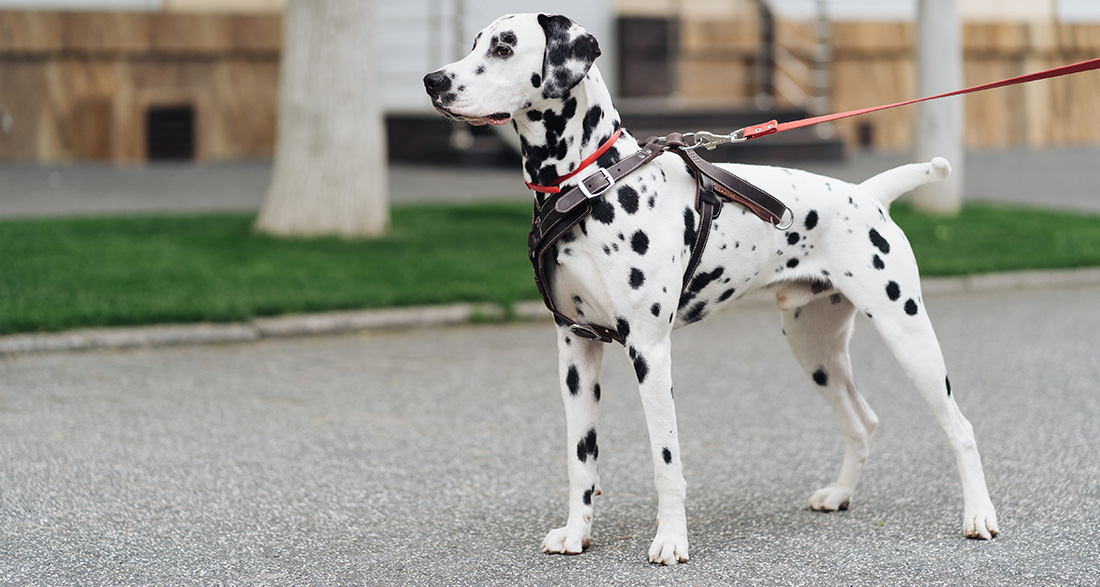Who is this trick for?
Walking sideways is generally suitable for any dog, regardless of size. However, your dog should be physically fit, as only a healthy dog is willing to work.
How do I teach my dog to walk sideways?
First, create an environment where both you and your dog can concentrate well. Also, ensure you have a non-slippery floor. Have your marker and tasty training treats ready, as this allows you to precisely reinforce the desired behavior. For small dogs, a target stick, which you should have trained with your dog in advance, can also be helpful.
Step 1
First, let’s establish the basic position. The basic position involves your dog standing with its shoulder close to your leg, with the dog’s shoulder touching your leg. Whether you want your dog on your left or right side is up to you and your dog. Choose the side that feels more comfortable for both of you, or if you have already trained “heel” with your dog, choose that side. Use a motivational tool in your hand to guide your dog into the desired position.
It’s helpful to let your dog “dock” onto your hand and lead him in a curve to your preferred side. Mark your dog as soon as he is in the desired position. Choose the reward point in a way that allows you to feed your dog from the outside, reinforcing the contact between the shoulder and leg. Repeat this step several times until your dog reliably shows the desired behavior.
Step 2
Once your dog reliably assumes the position based on your hand movement, you can put the desired behavior under signal control. Say your new signal, e.g., “step,” 0.5 seconds before your hand guides your dog into the desired position. If your dog starts showing the desired behavior on the signal after a few repetitions, it’s time to phase out your hand signal (bridge signal). Begin extending the desired position and simultaneously introduce an “okay” signal. At this point, start extending the desired position slightly.
This can be achieved relatively easily by reinforcing the desired holding position with intermittent rewards. Now is also the time to introduce a release signal. This teaches your dog to maintain the position until you give the release signal. Gradually increase the intervals between rewards for holding the position until you can completely phase them out. Your dog should have learned to assume and hold the desired position on your signal until you give the release signal.
Step 3
Once your dog has internalized the basic position, start working on walking sideways. For this, take a step outward with the leg away from your dog and slowly drag the leg against which your dog is leaning. Since your dog has already solidified the basic position, he will likely move immediately. If he doesn’t succeed at this point, you can use your signal to motivate your dog to slide back into the basic position. If he moves sideways with the step, immediately mark and reinforce the desired behavior. Repeat this several times before gradually incorporating more steps. Work in very small steps to ensure a clean build-up.
Step 4
If you can already perform several steps in a row after several repetitions, you can also put the behavior under signal control. Signals like “Step” or naming the direction you are going, such as “right” or “left,” have proven effective here. This allows you to later specify each direction separately.
Step 5
To train movement to the other side, bring your dog back to the basic position. Shift your weight to the leg facing your dog, causing your dog to move slightly. Mark and reinforce the slightest outward movement. Repeat shifting your weight several times before transitioning to the first step. If you can perform several steps here as well, you can introduce a signal.
Tip:
Initially, choose an environment where you and your dog are constrained by a wall to the rear. This helps ensure that your dog walks straight when moving sideways.


